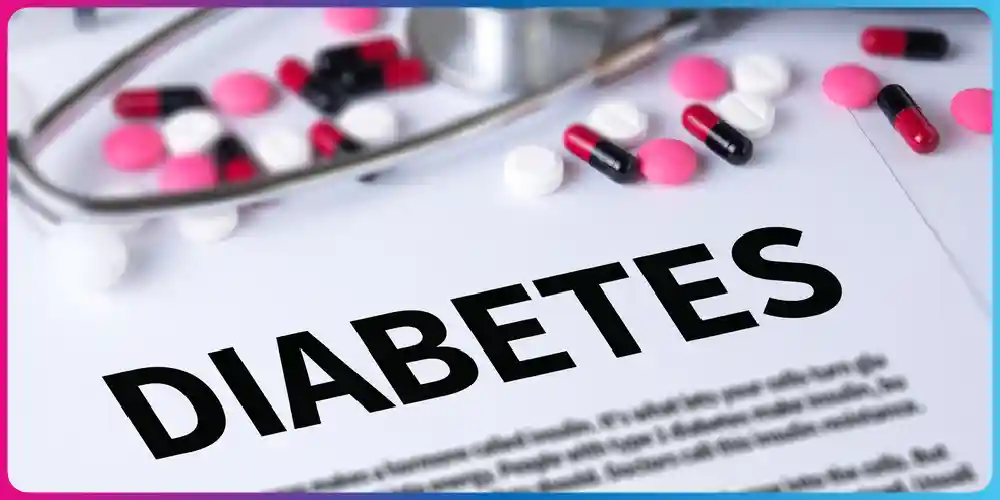Top 4 Tests for Diabetes: What You Need to Know

Diabetes, a condition affecting millions globally, has become increasingly prevalent. Amid this health concern, it’s crucial to detect diabetes early to manage it effectively and prevent complications. Regardless of whether you exhibit symptoms, understanding diabetes tests is essential for taking charge of your well-being.
Diabetes is on the rise, and many individuals might not even experience symptoms. This makes regular testing imperative, as early detection empowers timely interventions and better health management.
Do you want to know more about the various diabetes tests and what they can tell you about your health? Look nowhere else! The four most common tests for diabetes including those for Type 1 & 2 as well as prediabetes will be discussed in this blog.
So, let’s get started and by the end of this blog, you’ll know exactly which tests you need to perform to diagnose diabetes!
But, wait! Before we get into the technical details, let’s cover some basics that will help us understand things better:
Who Should Get Tested?
Diabetes doesn’t look at age. It can happen to and affect anyone, at any age. If you’re 40-45 years old or older, it’s usually a good idea to get tested regularly, even if you feel fine.
But if you’re younger and have things like obesity, a family history of diabetes, or high blood pressure, it’s smart to test at an earlier age. Remember, knowing about yourself and your body is important for your health!
Why You Should Test?
Think of these tests as a guide to your body’s health and well-being. They show you how much sugar is in your blood which is not being utilized.
By testing, you can find out if you have diabetes early. This way, you can change your habits and start treatments before things get serious. It’s like being ahead in a game for better health!
Symptoms and Signs you need to look out for Diabetes
Diabetes might sneak into your life without making noise. Some symptoms are being very thirsty, peeing a lot, losing weight without trying, feeling tired, and not seeing well. But sometimes, you might not feel any signs at all. This is why testing is super important – it helps us find out what’s really happening inside.
To know your chances of Diabetes reversal, take the Diabetes Reversal TestDiabetes Reversal
Calculator
Importance of Testing Without Symptoms
Even if you feel perfectly fine, testing for diabetes is a must. Why? Because diabetes can cause problems even before you feel anything. By finding it early, you can take charge of your health and stop things from getting worse later on.
As we go along in this blog, we’ll break down different tests, what they mean, and how they work. From the Haemoglobin A1c (HbA1c) test to the Oral Glucose Tolerance Test (OGTT) and others, you’ll become a diabetes testing pro!
Tests for Type 1 Diabetes, Type 2 Diabetes, and Prediabetes:
1. The Fasting Plasma Glucose Test (FPG)
Take this test as a morning test, like when you’re still in your pajamas! You need to fast for 8-10 hours before the test, but don’t worry, you can still drink water. Its just like eating your dinner early and taking this test in the morning and then proceeding with your breakfast. The levels indicate as:

If your blood sugar is 126 mg/dL or higher, it means you have diabetes. If it’s below 100 mg/dL, that’s normal, and if it’s between 100 to 125 mg/dL, it means you might have prediabetes.
2. The Oral Glucose Tolerance Test (OGTT)
This test is like a detective investigating how your body handles sugar. First, you take a blood sugar test before drinking a sweet drink, and then you take another test at the end of two hours after drinking it.


If the result is 200 mg/dL or higher, it means you have diabetes. If it’s below 140 mg/dL, that’s normal, and if it’s between 140 to 199 mg/dL, it means you might have prediabetes.
3. The Haemoglobin A1c (HbA1c) Test
Think of this test as a superhero that can see your blood sugar levels for the past 2-3 months! It’s a simple blood test that doesn’t require fasting. The results are shown in percentages as follows:


If the number is 6.5% or higher, it means you have diabetes. If it’s below 5.7%, that’s normal, and if it’s between 5.7% to 6.4%, it means you might have prediabetes, like a warning sign for diabetes.
4. The Random Blood Sugar Test
This test is like a quick check to see how much sugar is in your blood at any time of the day. You don’t need to fast for this one, and it’s super simple!


If the result is 200 mg/dL or higher, it means you have diabetes.
Now, let’s talk about the superheroes who made these tests!
Superhero ADA Criteria
The ADA (American Diabetes Association) made a set of rules for the tests. According to them,


If your HbA1c is 6.5% or higher, it means you have diabetes. If your OGTT result is 200 mg/dL or higher, it means you have diabetes. If your FPG result is 126 mg/dL or higher, it means you have diabetes. And finally, if your random blood sugar is 200 mg/dL or higher, it means you have diabetes.
FitterTake
Knowing the top four tests for diabetes is crucial for taking charge of your health. Early detection and proper management can make a huge difference in your well-being.
If you experience diabetes symptoms or have risk factors, don’t hesitate to get tested. Remember, staying informed about your health is like having your own superpower to lead a healthier life!
Reduced diabetes medications in 3 months


6.8%
Happy members
EMI
Guarantee
4.8/5
Diabetes Prime Program
To be certain, we suggest you also speak to our diabetes healthcare team, which has an expert dietician, nutritionist and psychologist to understand the types of tests for diabetes and which one is the best for you!
To learn more about Fitterfly’s Diabetes Care Program and how it can help you intelligently take control of your diabetes, speak to one of our counselors by just giving us a missed call at 08069450746, and we will definitely get back to you.
Wish to know more? Sign up for our program.
Remember, a healthy lifestyle and being mindful about your health conditions are essential for everyone, whether or not they have diabetes.
So, let’s keep our health in check!
Frequently Asked Questions
How often should I get tested for diabetes?
If you're at risk of developing diabetes, it's essential to get tested at least twice a year. If you already have a diabetes diagnosis, your healthcare provider will advise you on how often you need to get tested.
Can I still eat before taking a diabetes test?
For some tests, like the HbA1c test and the random blood sugar test, you don't need to fast, so you can eat as usual. But for the FPG and OGTT tests, you need to fast for 8-10 hours, so it's better to take them in the morning after a night's sleep.
What are the normal, prediabetic, and diabetic ranges for test results?
HbA1c: Normal: Below 5.7% Prediabetes: 5.7% - 6.4% Diabetes: 6.5% or higher OGTT: Normal: Below 140 mg/dL Prediabetes: 140 to 199 mg/dL Diabetes: 200 mg/dL or higher FPG: Normal: Below 100 mg/dL Prediabetes: 100 to 125 mg/dL Diabetes: 126 mg/dL or higher Random Blood Sugar: Diabetes: 200 mg/dL or higher
Are there any risks or side effects associated with diabetes testing?
These tests are generally safe and don't have any risks or side effects.
What should I do if my test results indicate diabetes or prediabetes?
If your test results indicate diabetes or prediabetes, don't panic. It's important to work closely with your healthcare provider to create a plan to manage your condition. This may include lifestyle changes, medication, and regular check-ups.
Can diabetes tests give false results?
While diabetes tests are generally accurate, there is a small chance of false results. Factors like timing of testing,medications or certain medical conditions can affect the test outcomes. If you have any doubts about your test results,you can repeat the test or be talk to your healthcare provider before taking these tests.





















